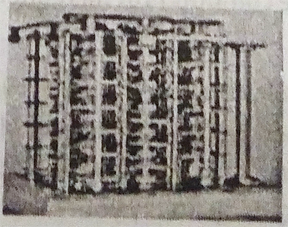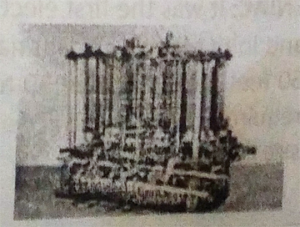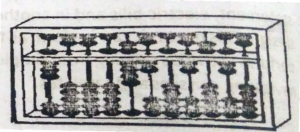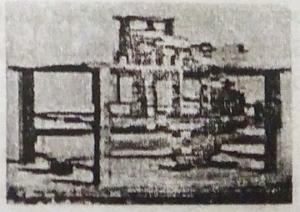History of computer could be traced back to the effort of man to count large numbers.
This process of counting of large numbers generated various systems of numeration like Babylonian system of numeration, Greek system of numeration, Roman system of numeration and Indian system of numeration.
Out of these the Indian system of numeration has been accepted universally.
It is the basis of modern decimal system of numeration (0,1,2,3,4,5,6,7,8,9).
Later you will know how the computer solves all calculation based on decimal system. But you will be surprised to know that the computer does not understand the decimal system and uses binary system of numeration for processing.
We will briefly discuss some of the path-breaking inventions in the field of computing devices.
1. Calculating Machines :
Abacus was the first calculating device of the world developed in China about 5000 years ago (in 3000BC).
Abacus can be used to perform addition, subtraction, division and multiplication; the abacus can also be used to extract square-roots and cubic roots.
The Abacus is typically constructed of various types of hardwoods and comes in various sizes. The frame of the Abacus has a series of vertical rods on which a number of wooden beads are allowed to slide freely. A horizontal beam separates the frame into two sections. known as the upper deck and the lower deck. The abacus was so successful that its use spread from China to many other countries. It took over generations for early man to build mechanical devices for counting large numbers. The first calculating device called ABACUS was developed by the Egyptian and Chinese people.
The word ABACUS means calculating board. It consisted of sticks in horizontal positions on which were inserted sets of pebbles. A modern form of ABACUS is given in Figure 1.2. It has a number of horizontal bars each having ten beads. Horizontal bars represent units, tens, hundreds, etc.
2. Napier’s bones :
English mathematician John Napier built a mechanical device for the purpose of multiplication in 1617 AD. The device was known as “Napier’s bones”.
3. Slide Rule :
English mathematician Edmund Gunter developed the slide rule. This machine could perform operations like addition, subtraction, multiplication, and division. It was widely used in Europe in the 16th century.
4. Pascal’s Adding and Subtractory Machine :
You might have heard the name of Blaise Pascal. In 1640, he developed a machine at the age of 19 that could add and subtract. The machine consisted of wheels, gears and cylinders.
The first working model was introduced in 1642 It was known as the pascaline adding machine. It was the first mechanical calculator that used gears.
5. Leibniz’s Multiplication and Dividing Machine :
In the early 1673’s, The German philosopher and mathematician Gottfried Wilhem Von Leibniz built a better gear-driven calculating machine that could both multiply and divide. The Stepped Reckoner worked faster than Pascaline. It used a system of gears to multiply and divide as well as add and subtract.
6. Jacquard Loom :
In 1801, Joseph-Marie Jacquard built a weaving loom that used a moving, gear-driven belt of cards, instead of human hands, to pick out threads and weave them into patterns. Jacquard’s idea of using punched cards to control patterns helped later inventors to develop calculating machines that could – follow simple directions. This was a landmark point in programmability.
7. Babbage’s Analytical Engine :
It was in the year 1822 that a famous English man Charles Babbage built a mechanical machine to do complex mathematical calculations. It was called a difference engine.
 |
| Difference Engine |
 |
| Analytical Engine |
In 1833, he developed a general-purpose calculating machine called an analytical engine. You should know that Charles Babbage is called the father of computers.
8. Tabulating Machine :
1881, Herman Hollerith began designing a machine to tabulate census data more efficiently then by traditional hand methods.
The U.S. Census Bureau had taken eight years to complete the 1880 census, and it was feared that the 1890 census would take even longer.
Herman Hollerith invented and used a punched card device to help analyze the 1890 US census data.
 |
| Tabulating Machine |
Herman Hollerith’s great breakthrough was his use of electricity to read, count, and sort punched cards whose hoes represented data gathered by the census takers. His machines were used for the 1890 census and accomplished in one year what would have taken nearly ten years of hand tabulating.
In 1896, Herman Hollerith founded the Tabulating Machine
Tabulating Machine Company (TMC) to sell his invention, the company became part of International Business Machine (IBM) in 1924.






